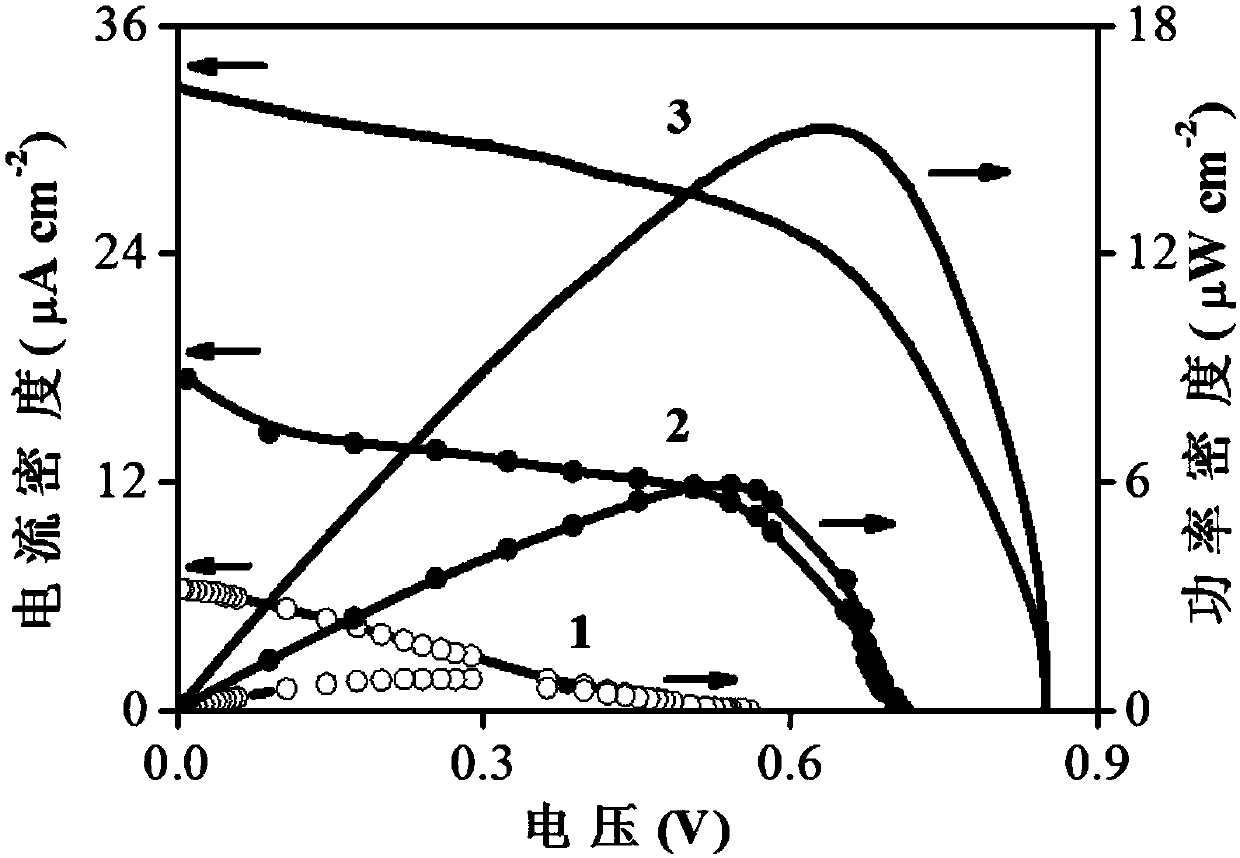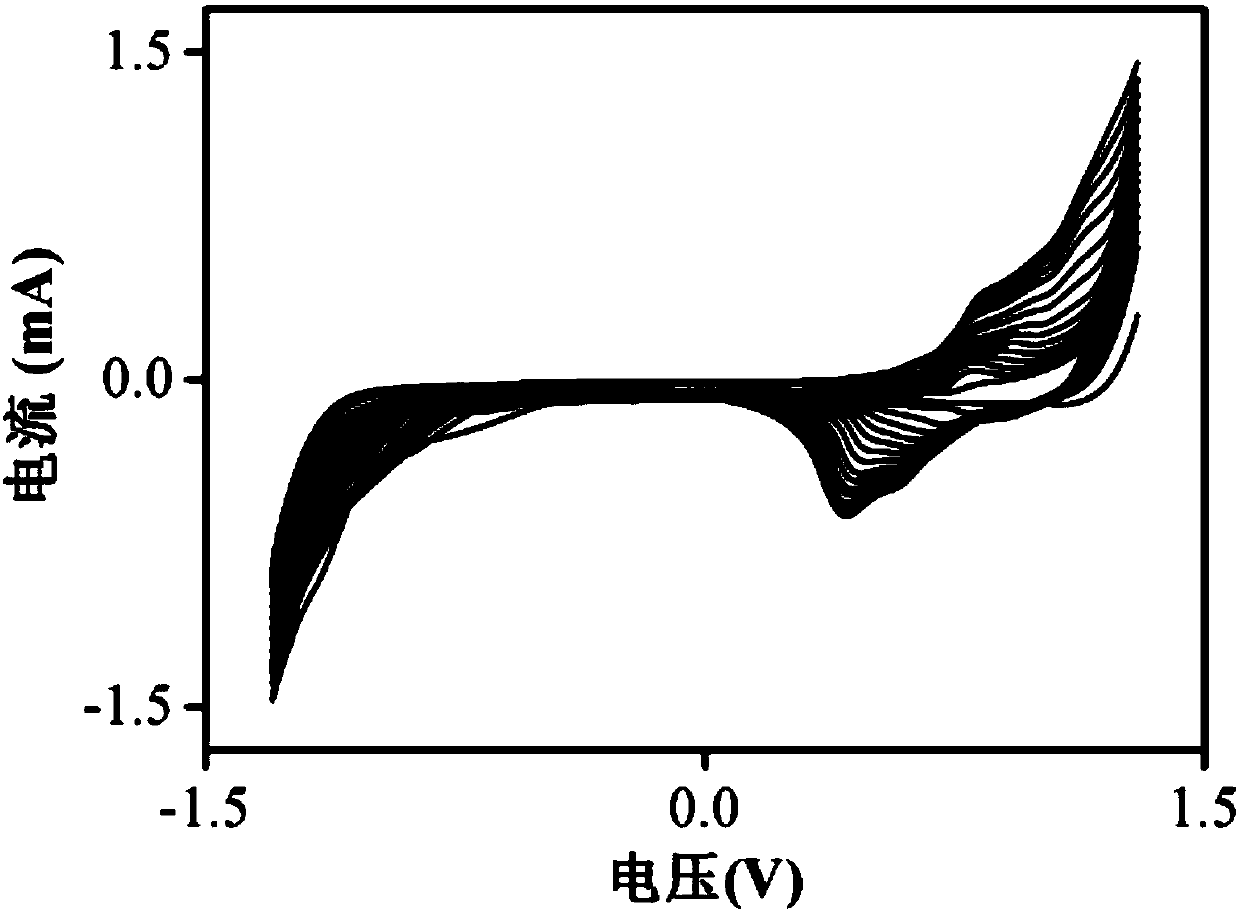Method for constructing photo-assisted fuel cell by using electrocatalyst nickel oxide and application thereof in pollutant bisphenol A degradation
A technology of fuel cells and electrocatalysts, which is applied in the direction of water pollutants, chemical instruments and methods, battery electrodes, etc., can solve the problems of large material particles, cumbersome preparation process, complicated operation, etc., and achieve stable material structure and properties, and preparation methods Simple and fast effect
- Summary
- Abstract
- Description
- Claims
- Application Information
AI Technical Summary
Problems solved by technology
Method used
Image
Examples
Embodiment 1
[0025] Embodiment 1: the preparation of a kind of electrocatalyst nickel oxide electrode
[0026] The NiO of this embodiment x / ITO electrode, prepared by the following method:
[0027] With water as the solvent and nickel salt as the main component, an electrodeposition solution with a concentration of 0.005mol / L was prepared; a sodium salt with a concentration of 0.1mol / L was added as a supporting electrolyte; the pH was adjusted to 3.5 with sodium hydroxide solution, The temperature of the electrodeposition solution was adjusted to 25°C; the ITO electrode was used as the anode, the platinum sheet was used as the counter electrode, and the saturated calomel electrode was used as the reference electrode, which were respectively connected to the three electrode joints of the electrochemical workstation to control the NiO x The deposition potential range is 0.0V~-1.3V( figure 2 ) or 1.3V~-1.3V ( image 3 ), respectively deposited 20 laps, and then soaked the electrode in de...
Embodiment 2
[0028] Embodiment 2: Construction of light-assisted fuel cell
[0029] With CdS / TiO 2 / ITO electrode is made anode, with two kinds of NiO prepared in embodiment 1 x / ITO electrode as the cathode respectively; add sodium sulfate solution with a concentration of 0.1mol / L in the anode pool as the electrolyte solution, add bisphenol A solution with a concentration of 0.05-3mmol / L as the fuel, and adjust the pH to 13.0; in the cathode pool Add 0.1mol / L sodium sulfate solution and 0.05-5mol / L sodium hypochlorite solution to adjust the pH to 13.0; connect the two pools with a saturated potassium chloride salt bridge, and construct a photo-assisted fuel cell under visible light irradiation.
Embodiment 3
[0030] Embodiment 3: Light-assisted fuel cell performance test
[0031] To the test of the photocatalytic fuel cell performance that embodiment 2 builds, specific operation steps are as follows:
[0032] Adjust the resistance value of the resistance box connected between the anode and the cathode of the photocatalytic fuel cell, measure and calculate the change curve of the current density and power density of the photocatalytic fuel cell with voltage, the result is as follows figure 1 shown.
[0033] Under visible light radiation, the short-circuit photocurrent density of the fuel cell in the photoelectrochemical fuel cell constructed with ITO as the cathode in Example 2 is 6.4 μA cm -2 , with a maximum power density of 0.83 μW cm at 0.26 V -2 , NiO prepared by electrodeposition in the range of 0.0V~-1.3V x The short-circuit photocurrent density of the fuel cell in the photoelectrochemical fuel cell constructed with ITO as the cathode is 17.42 μA cm -2 , with a maximum po...
PUM
| Property | Measurement | Unit |
|---|---|---|
| current density | aaaaa | aaaaa |
Abstract
Description
Claims
Application Information
 Login to View More
Login to View More - R&D
- Intellectual Property
- Life Sciences
- Materials
- Tech Scout
- Unparalleled Data Quality
- Higher Quality Content
- 60% Fewer Hallucinations
Browse by: Latest US Patents, China's latest patents, Technical Efficacy Thesaurus, Application Domain, Technology Topic, Popular Technical Reports.
© 2025 PatSnap. All rights reserved.Legal|Privacy policy|Modern Slavery Act Transparency Statement|Sitemap|About US| Contact US: help@patsnap.com



